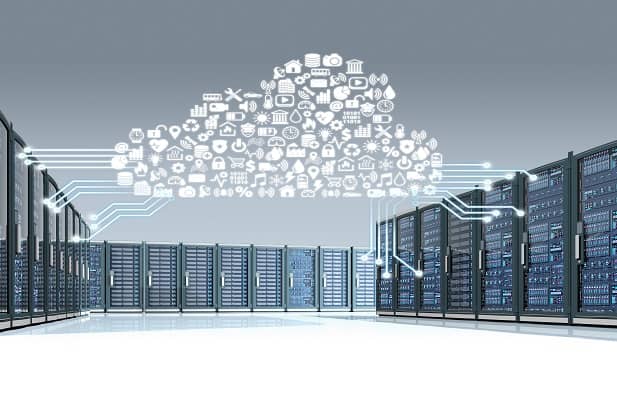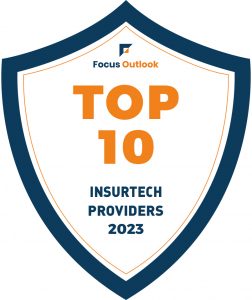Table of Contents
The Client
The client is one of the world’s foremost medical research centres, and the federal focal point for medical research in the United States. The client consists of 27 separate Institutes and Centres and is one of eight health agencies of the Public Health Service, which in turn, is part of the U.S. government. The Client is using legacy oracle forms and seeking Oracle Forms Migration solutions to a modern web based application.
Business Situation
The client was using legacy Oracle Forms applications, which was difficult to maintain, improve and upgrade. Also this system was a misfit as part of the president’s management agenda of managing grant funds online.
Solution
By using Kumaran’s JAVA tool migration and services, the legacy Oracle forms applications were re-engineered to a more modern web based, multi-tier, thin client based J2EE applications. The solution was provided by Kumaran by subcontracting with IBM.
The client is an agency of the United States Department of Health and Human Services (DHHS) and is the primary agency of the United States government responsible for medical research. The Institutes are responsible for 28% – about $28 billion – of the total biomedical research funding spent annually in the U.S. Today it is one of the world’s foremost medical research centres, and the Federal focal point for medical research in the U.S.
The client’s mission is to uncover new knowledge that will lead to better health for everyone. The client works towards that mission by: conducting research in its own laboratories; supporting the research of non-Federal scientists in universities, medical schools, hospitals, and research institutions throughout the country and abroad; helping in the training of research investigators; and fostering communication of medical and health sciences information.
The legacy modernization for a user base of 3000 by Kumaran was carried out as a subcontractor to IBM, as part of the initiatives by the Office of the Director (OD) of the client.. The OD is responsible for setting policy for the client and for planning, managing, and coordinating the programs and activities of all the client’s components.
The client was able to realize cost savings of approximately 30% by using Kumaran Tools & Migration services when compared to the proposal of re-building the application from scratch.
President’s Management Agenda
“Agencies to allow applicants for Federal Grants to apply for, and ultimately manage, grant funds online through a common web site, simplifying grants management and eliminating redundancies . . .”
The Situation
The existing IMPACII (Information for Management, Planning, Analysis, and Coordination) application modules relating to the Federal grants management was written using legacy Oracle forms. . These applications are invoked as Oracle forms executable files from the user’s desktop for their day-to-day operations. This is a client server based architecture, Oracle forms 6i (thick client) executable uses the Oracle 10g database for data Services. Application business rules are either stored in the database stored procedures or in the library files distributed with the client-server applications. Being a client server application it did not allow the federal agencies to realize the president’s management agenda for managing grant funds online.
Since the applications were not deployed and maintained centrally, up-gradation to the latest release was a lengthy and cumbersome procedure as application running in all of the client machines needs to be upgraded simultaneously.
This client server application has been in business for the past 12 years and maintaining these applications in terms of implementing new requirements was adding up the already existing challenges for the client.
In addition, the client’s OD was building new applications in J2EE and wanted to standardize on one software development platform and technology. Lack of complete documentation on legacy applications made the task of coding the applications in J2EE more difficult, time consuming and obviously expensive.
Solution
Kumaran tools and migration services were employed by the client to transform and modernize the Oracle forms legacy application to a more sophisticated modern web based, multi-tier, thin client based J2EE application.
Some of the salient features of this legacy modernization by Kumaran are
- Look and feel of a completely re-designed modern web natural application.
- The existing functionality of the client server was preserved and future maintenance on the transformed code were made less complex
- The transformed application was in sync with the existing J2EE application of clients in terms of J2EE patterns and standards
- The standard eRA framework used for the client OD J2EE applications was made use of by Kumaran for this legacy transformation.
- Moreover this framework was also extended and modernized and extended by Kumaran to make it flexible to various project needs.
- Class & Sequential diagrams provided as part of the legacy transformation.
- The existing client server access and functionality were role driven. The same role driven functionality was carried using Oracle OCI thick driver
- Intelligent validation and Query tuning to improve performance of the transformed application.
- Complete automated keyword driven win runner test scripts were provided to the client to carry out tests on the transformed application with ease. The automated test scripts are highly maintainable, scalable and easy to use, similar to the transformed code.
Benefits
Cost Benefit (Migration Vs. Development)
The client was able to achieve a significant cost benefit of 30% for migrating the existing C/S applications, instead of a complete grounds-up development.
Easy Transition and Minimal Training for Users
Since there was no functional change and the elements present in the client server were available in the transformed J2EE application, the users were able to transition themselves to the new software with ease and very minimal training.
Fit into the Federal initiative of managing Grants online and be a part of the electronic process
Since the application is transformed to a web based application, this very well fits into the federal initiative and vision of managing the Grants online. Also this transformation fits into another initiative of converting paper-based business process into electronic processes that eliminate paper forms, file folders, documents, and the inefficiencies associated with these.
Lower Costs
The transformed application can be accessed using a browser and no special configuration or changes are needed on users PCs. Also since the software is maintained in a centralized environment, it is easy to change, and maintain. Updates can be made quickly and easily These factors significantly lower costs.
24X7 Access
Since transformed application can be accessed via web, authorized users have access from anywhere, 24 hours a day, 7 days a week and the information is accessible to a wider audience. This also provides the opportunity for the client staff to telecommute.
Secure Role based Access
Since the existing legacy application had a role based security mechanism, the same feature has been provided in the converted application. Therefore, one cannot gain access to the system without proper roles and credentials.
Ease of Maintenance
The transformed application follows best practices, JAVA patterns, standards and sticks to the framework and guidelines set by the federal architects, thereby the outcome being a maintainable code base capable of dealing with any future business changes.
Shorten Grant Lifecycle
Resulting efficiencies would allow the client to shorten the cycle from application receipt to award.
Impact of Project
- Oracle Forms Migration helped these applications fit as part of the paperless initiative proposed by the government
- Eliminated the burden of paper-based data collection and increased user experience.
- Resulting efficiencies allowed the client to shorten the cycle from application receipt to award
- Improved delivery of services to the public
- Advantages of thin client based computing rather than a thick client
- The migrated applications are easy to maintain from a centralized application and eliminates software upgrades in each client machine
- Authorized users have access from anywhere, 24 hours a day, 7 days a week.



